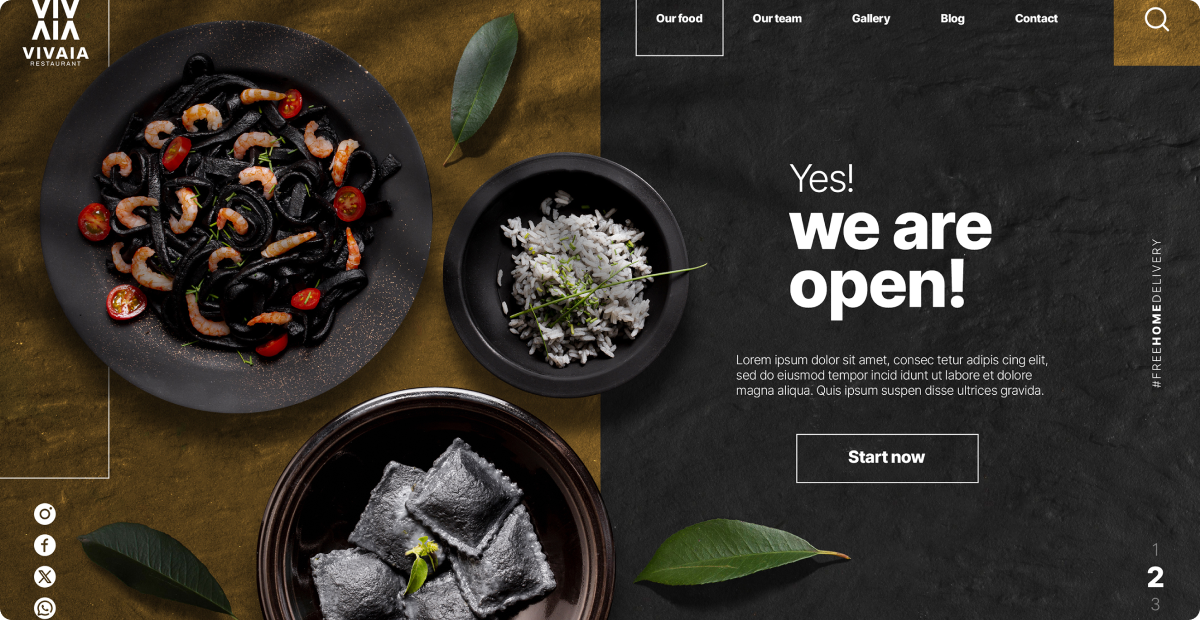Key Takeaways
As the online landscape changes rapidly, businesses must continually adapt to remain relevant. Getting the most out of your business will require a flexible approach to both sales and marketing. As time goes on, businesses are implementing newer methods of moving their products. One of the hottest trends that is seen currently is Direct-to-Customer Delivery & Marketing.There is no sign of the DTC industry slowing anytime soon.
In fact, with the ongoing pandemic, the D-T-C model has actually helped restaurants keep their establishments from shutting down. Many restaurant owners have chosen to cut ties with third-party aggregators and focus on getting direct online orders.
his not only provides them opportunities to make their business pandemic-proof, but also increase loyalty and profitability that would help them stay afloat during the crisis and in the future.
What is D2C?
Direct to consumer sales entail eliminating the third-party aggregators and selling food directly to consumers. With big brands following suit, this is quite prevalent in the market. Dominos, for instance, has always targeted sales on its website apart from outlets -about 30% more than the retail stores.
D2C website has the potential to sell more food, with higher average ticket size and upsell opportunities that enable restaurants to make more profit per sale, pertaining to higher margins.
You can reach out directly to your target audience through Direct to Consumer sales, which eliminates the various processes and strategies associated with traditional selling. Additionally, it allows you to hone your understanding of how customers interact with your business and encourages good customer relations.
Why is now the ideal time to launch a Direct-to-Consumer brand?
According to a report by Review42, the restaurant-to-customer approach is projected to earn a revenue of $71,918 million by the end of 2021, compared to the $79,608 million of the platform-to-customer approach.The reason why ordering directly from restaurants is more popular is simple – it’s cheaper with less additional fees compared to third-aggregator platforms like GrubHub, UberEats and more. Selling directly to consumers has two major advantages for brands: DTC brands own the relationship with their customers:
- Direct-to-consumer selling help restaurants gain access to valuable customer data. The results are immediate, and the business can engage with its most valuable customers in a new and authentic way.
- The Demand is real: Customers are now open to interact with restaurants independently. They understand that buying directly from their favorite restaurant will help the business survive, as well as ensure better service.
How to start a direct-to-consumer brand in 10 steps?
Here are some steps that will help you understand how to proceed. This is also a helpful checklist to ensure you do not miss an important step:
Step 1: Partner with the Right Technology Provider
It is possible for anyone to start a restaurant website, however it takes an army to keep the business streamlined. The first step to venturing into the digital space is to find an online ordering platform that provides you with a robust technology that would not only provide a branded experience to your customers but also a 24/7 support to your team to ensure a seamless interaction and delivery across departments.
Get a comprehensive Online Ordering System for your Restaurant Free for 30 Days Now!
Step 2: Analysis of the market and plan of action
Consider who your customers and competitors are. In the case of an experimental menu/cuisine, it will most likely take time to build awareness about your offering. However, starting with basic menu items from the chosen cuisine will give you a good start. Make sure all the dishes that you include in the menu travel well.
Step 3: Develop Your Brand
A strong brand is essential for building trust with customers and forming meaningful relationships. Communicating with your customers clearly and more frequently is key to gain their trust and appreciation. Tel your story through various platforms, particularly your social media.
Step 4: Self-Delivery or Third-party?
Don't have the infrastructure for self-delivery? You can always look for third-party delivery providers for collaboration. However, there's always cost associated with both kinds of delivery models. You should conduct an analysis of the pros and cons of both methods from step one, so that you can make a confident decision. Consider, for instance, the demographic of your ideal customer and where they are most likely to place orders from. Can they find you directly by searching online or by using third-party apps? Here you'll have to assess all the available resources, and so some calculation to find the most optimal method of delivery for your business. This guide here can help you make an informed decision.
Customers can also select buy-and-collect when ordering online, so they can pick up their food from the curbside porch of your restaurant.
Step 5: Automate The Order Flow
The next step is to determine how you will receive and manage orders. To maximize order flow, you want to ensure maximum convenience and minimal friction for customers. Your ordering process should also be highly efficient.
It's best to have a system that can aggregate all orders, no matter if you're using a third-party ordering and delivery platform, your own white-label app, or other channels. As a result, you can manage them in one place, and have accurate data for future business improvements.
Step 6: Optimize The Menu
A large menu is common among FMCG brands and retail outlets. Your menu must have the right balance and logical flow in order to maximize average order value and satisfy customers. Price your menu items reasonably and decide if you should offer special offers to entice new customers and foster loyalty.
Due to the fact that customers are hungry for information and quite intrigued to know what goes into their food, it's best to provide as much information as possible on the ordering menu. Use high-quality photos taken against a consistent backdrop when displaying your products.
Step 7: Promote Your New Channel
Last but not least, you must market your new channel. If you don't communicate that you're launching a delivery channel, your customers won't know where to order from!
Choosing the right method will depend on your brand and your customer base. It is either possible to pay for advertising or to rely on your existing channels. For instance, you can use pop-up boxes on your website, launch a social media campaign, or send an email promotion.
Marketing campaigns on social media are popular among many brands. Consider asking for testimonials, best photos, or running a contest to thank your loyal fans. The delivery platform apps can also be used to provide special discounts to delivery customers.
Step 8: Customer Support
As a successful online entrepreneur, your main goal is to delight your clients. Happy customers will share their experience online and recommend your product to their friends and family. Creating a clear model before starting to sell online is crucial in order to support your clients. Think carefully about how you will handle deliveries, complaints, special discounts and refunds (if applicable).
2 things to consider when going D2C
When considering direct-to-consumer sales, watch out for these common pitfalls:
1. Ensure your business is 100% ready for a shift to direct-to-consumer :
Going direct-to-consumer won't just happen; it's going to require a lot of work from you. In the transition to a D2C model, companies need to train and enable their employees, improve current processes (and develop new ones), and ensure that they will be able to operate efficiently and profitably.
To take this a bit further, you should also have a clear reason as to why D2C is the right choice for your business. Also, it is important for you to communicate your rationale to your team as well as to your customers in a way that is meaningful to them. You have little chance of being successful in your D2C endeavors without this clarity and transparency.
2. Get your partners ready:
Similarly, for companies looking to leverage a "hybrid" model, where they offer their customers both the options, offline as well as online, you might want to look into integrations that can streamline day-to-day operations. There are a number of apps and platforms that can help you create a comprehensive eco-system for your staff, partners and customers, enabling them to interact with your customer without unnecessary glitches.
What is the driving force behind the direct-to-consumer trend?
As a result of the Coronavirus pandemic, the D2C trend has intensified. In the wake of global lockdowns, brick-and-mortar stores around the world had to close for several months. A decade's worth of e-commerce growth occurred in just 90 days during the peak of the pandemic.
According to Hana Abaza, Shopify Plus’ Global Director of Marketing, “During the pandemic, direct-to-consumer brands with thriving ecommerce experiences were able to very quickly and easily pivot their marketing and messaging, their energy. They didn’t have to fundamentally rethink their business model. They could focus on very different things because they were at a significant advantage.”
Closing Points
The importance of direct-to-consumer companies is undeniable right now. What is the true value of going D2C for your restaurant in the long run, or is it simply a passing fad? The truth is, D2C isn't a fashion style or a fad, but that doesn't mean it will go out of style soon. D2C explosion in recent years is anything but random.
Restaurant Businesses that offer direct-to-consumer services have experienced such success because they're able to provide a more authentic, personalized experience to their customers. This is perhaps the perfect time to evolve your business into a D2C one. Focusing on the above-mentioned strategies and processes would enable you to sail towards the right direction.
Frequently Asked Questions


.gif)
.png)
.png)


.png)



